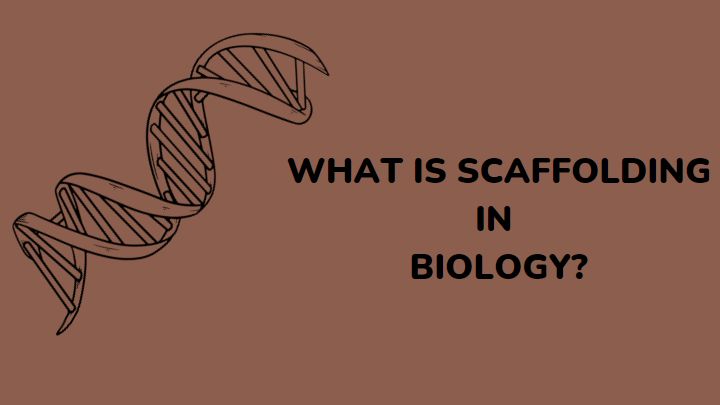If you get involved in a lot of planning and moving things, you may be familiar with metal or wooden scaffolds. Outside of this use, the terms scaffold and scaffolding are also used in science-based subjects like biology.
In biology, scaffolds and scaffolding are used in biological processes. Just like in physical uses, any biological material that is called scaffolding provides structural support.
In this article, I’ll be discussing what scaffolding means in biology, how it works, and the types.
What does scaffolding mean in biology?
In biology, scaffolds and scaffolding are used in tissue engineering and molecular biology. Scaffolds are like proteins that trigger tissue repair in injury sites.
Scaffolds act as a support frame for cells to grow, attach and differentiate in damaged areas. They also protect fibroblasts and mature stem cells during the regeneration process.
Scaffolding in biology represents a combination of genomic sequences and gaps. They are also called adaptors or links.
Scaffolds are proteins that act as a linking bridge between two other proteins to form one complex that enhances functionality. These proteins have a framework called the cytoskeleton, which provides support for the cytoplasm and the cell.
What is the scaffolding process in biology?
The scaffold process is not a type of enzymatic process but it aids enzyme activity. The scaffolding process aids the localization of enzymes in a biographical pathway.
These proteins provide structural support for cell attachment and tissue development during the regeneration process. However, scaffolding can be more than this.
Biologically, it is a more extensive process. It is a very selective one that uses specific living biomaterials. These materials cannot be mistaken for another. This means that each biomaterial is specific for a specific tissue or organ.
The action of scaffolds in biological processes is characterized by:
- Intracellular and intercellular communication. Scaffold proteins help to effectively communicate signals between membranes and the nucleus
- Coordination of signal molecules across all other components of the cell
- Strategically placing scaffold protein complexes at the right receptor sites
- Organization of cellular pathways
- Bringing proteins to a stable configuration
- Increased and effective coordination of feedback signals (positive and negative) to enhance the speed and accuracy of cellular responses
- Protecting signaling proteins from the competitive counterparts
- Anchoring signaling protein components
What is the scaffold protein in DNA?
Scaffold protein plays an important role in chromosome folding in DNA. The scaffold protein that does this is known as the chromosome scaffold.
This chromosome scaffold contains proteins such as condensin, topoisomerase IIα and kinesin family member 4 (KIF4). These proteins help to fold the chromatin into a chromosome.
Types of scaffold
There are 3 popular types of scaffolds. They are:
Porous scaffold
Porous scaffolds promote cell differentiation and multiplication. The porous biomaterials also make enough room for cell attachment.
Moreover, they are designed to have matching pore sizes with the cells, thereby preventing clustering. However, they are not without their downside. The porous biomaterials do not allow even distribution of cells.
Fibrous scaffold
The biomaterials used in this type of scaffold are fibrous. Fibrous scaffolds are good but it is difficult to control the activities going on in the cell because of the size of the pores of the fibrous matrix.
The matrix is very porous which makes it best suited for cell attachment, multiplication, and differentiation.
Hydrogel scaffold
These scaffolds are natural or synthetic gels of polymer chains. These biomaterials swell when placed in an aqueous solution. This increases their water content and makes them biocompatible.
Additionally, they are very permeable to nutrients and oxygen. They are also highly permeable to cells in the surrounding solution. With this property, they create something like a framework around the cells and provide support for their structural growth
Despite these many benefits, hydrogel scaffolds are not strong. Some examples of natural hydrogel scaffolds are agarose gel, xyloglucan, and hyaluronan.
There are three other types of scaffolds. But, they are not as popular as the porous, fibrous, and hydrogel scaffolds. They are microsphere, composite and acellular scaffolds.
Is scaffolding in tissue engineering the same as scaffolding in biology?
Yes, it is. Biology is a broad science that also includes a good portion of tissue engineering, which also encompasses bioengineering. Scaffolding in tissue engineering is one of the many forms scaffold protein can take.
FAQs
Are scaffold proteins the same as anchor proteins?
Yes, they are. Both types of protein act as linkages for two or more proteins. They are smaller proteins that provide structural support for cells during tissue regeneration.
What is scaffolding in the enzymatic process?
Although scaffolds do not holistically influence enzymatic processes, they play essential roles. Scaffolds act as a protective barrier to shield the pathways from the interference of external factors that can disrupt the process or affect the outcome.
What is scaffolding in human development?
Scaffolding in human development is a nonbiological process that aims to help novices or kids to achieve feats or solve problems that are beyond them.
Conclusion
Scaffold and scaffolding are two different biological terms. Scaffolding refers to the parts while scaffold refers to the whole. Both terms are key processes of molecular biology and tissue engineering.
In biology, scaffolds are essential proteins that regulate the activities in crucial pathways that involve the regeneration and repair of tissue.
Thanks for reading.
Visit Gezro for more articles on biology and other sciences.
